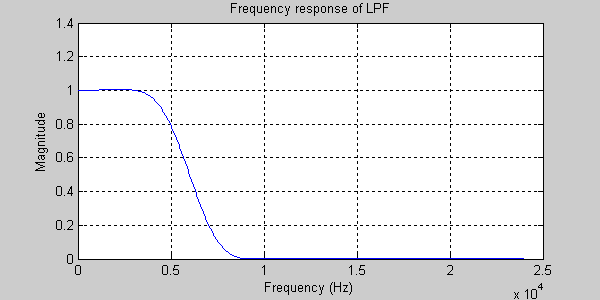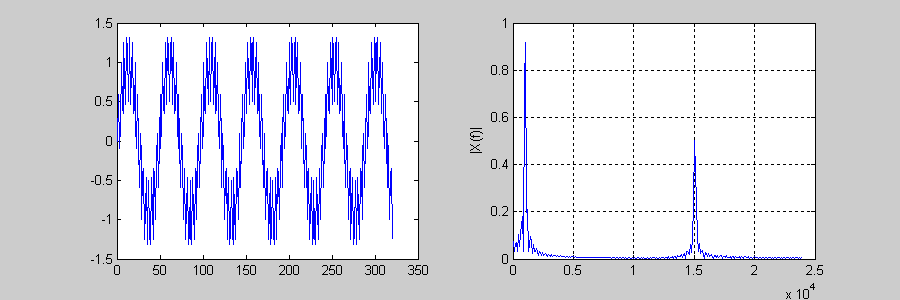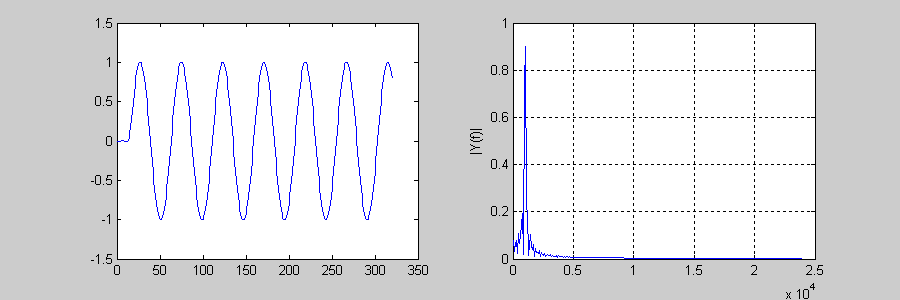 |
CMSIS-DSP
Version 1.10.0
CMSIS DSP Software Library
|
 |
CMSIS-DSP
Version 1.10.0
CMSIS DSP Software Library
|

h = fir1(28, 6/24);
The first argument is the "order" of the filter and is always one less than the desired length. The second argument is the normalized cutoff frequency. This is in the range 0 (DC) to 1.0 (Nyquist). A 6 kHz cutoff with a Nyquist frequency of 24 kHz lies at a normalized frequency of 6/24 = 0.25. The CMSIS FIR filter function requires the coefficients to be in time reversed order.
fliplr(h)
The resulting filter coefficients and are shown below. Note that the filter is symmetric (a property of linear phase FIR filters) and the point of symmetry is sample 14. Thus the filter will have a delay of 14 samples for all frequencies. 



testInput_f32_1kHz_15kHz points to the input data refOutput points to the reference output data testOutput points to the test output data firStateF32 points to state buffer firCoeffs32 points to coefficient buffer blockSize number of samples processed at a time numBlocks number of framesRefer arm_fir_example_f32.c